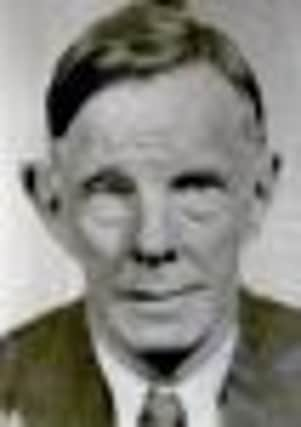Wilfred Seward, Titanic Survivor


At 11.40pm he felt the ship shudder. Several minutes later, he was alerted by one of staff that the ship had hit an iceberg. Seward jumped out of his bunk and made his way to the deck. At first, all was calm. Then, unexpectedly, the order was given to assemble at the lifeboats.
Seward and his fellow crewmen were given the responsibility of accompanying passengers in the lifeboat as they were lowered and he was tasked with looking after Lifeboat #3. However, as it was slowly eased towards the calm sea, disaster struck and it capsized tossing everyone into the sea.
Advertisement
Hide AdAdvertisement
Hide AdSeward was eventually picked up by another lifeboat and had to sit and watch as the great ocean liner sank with the loss of over 1,500 lives.
“As she went down I heard terrible screams, like people yelling wildly at a football match. Then there was nothing but silence.”
He was saved when the S.S. Carpathia arrived at 4.00am on the morning of 15 April. She rescued the 705 survivors and then sailed for New York. No other survivors were found.
From Titanic to the trenches
Only two years after Wilfred Seward’s narrow escape on the RMS Titanic, he went to war. 3443 Private Seward enlisted in the 10th (Scottish) Battalion, The King’s Liverpool Regiment on 29 August 1914. On 1 November he landed in France ready to fight, only to be discharged and sent home four weeks later.
Advertisement
Hide AdAdvertisement
Hide AdHis invalidity certificate records that he was suffering from rheumatism and reports that:
“This man was on board the Titanic when she went down. He was in the water 2½ hours….Causation of the disability - immersion at sinking of the Titanic.”
Back on the ocean
When peace returned to Europe, Wilfred Seward went to sea again on ocean liners. He often travelled the same fateful route as the RMS Titanic, Southampton to New York. In 1954, he retired and came with his wife to Ballymoney where they lived in Glebeside. He died in 1963, aged 77, in the house of his daughter, Doris, on the Newal Road. He is buried in an unmarked plot in the Ballymoney Borough Council Cemetery, Knock Road.
Ballycastle’s Titanic loss
James Blaney was born in Ballycastle. He joined the Royal Navy as a young man and later left to work for the White Star Line. He was among the crew of the Titanic and worked as a Fireman in the engine room. Blaney was one of those lost and his body was never recovered. The Sunday following the sinking, special prayers were said in his memory at every church in the area.
Advertisement
Hide AdAdvertisement
Hide AdBallymoney Museum would be very pleased to hear from you if you have further information on Wilfred Seward or any other Titanic stories linked to Ballymoney and district. The latest exhibition “Marathon Mac and other centenary stories” features K.K. McArthur, the Olympic gold medallist, Ulster Day and the story of Wilfred Seward and is on display from 6 April – 22 September 2012. The exhibition is supported by the Heritage Lottery Fund. Ballymoney Museum, Ballymoney Town Hall, Townhead Street, Ballymoney, BT53 6BE, Tel: 028 2766 0230 Email: [email protected].